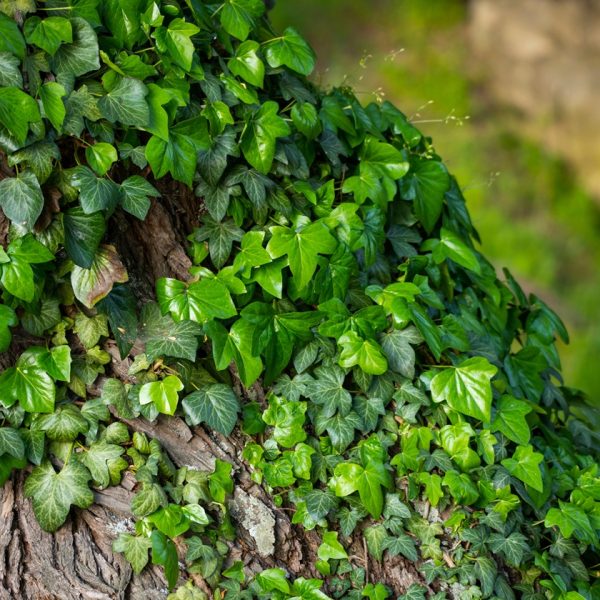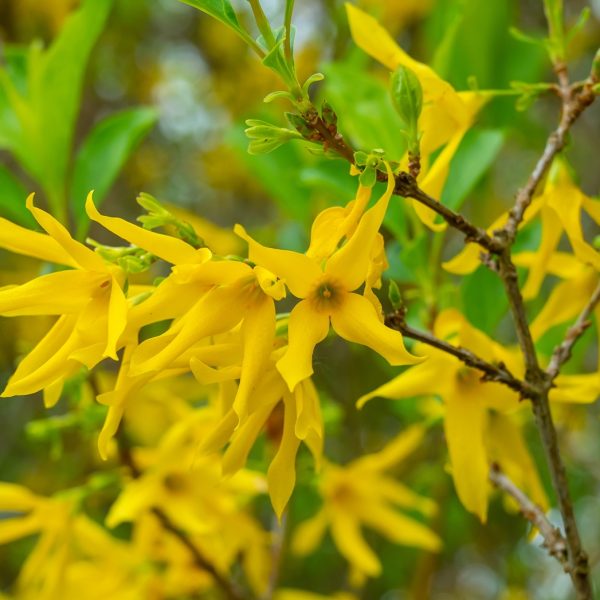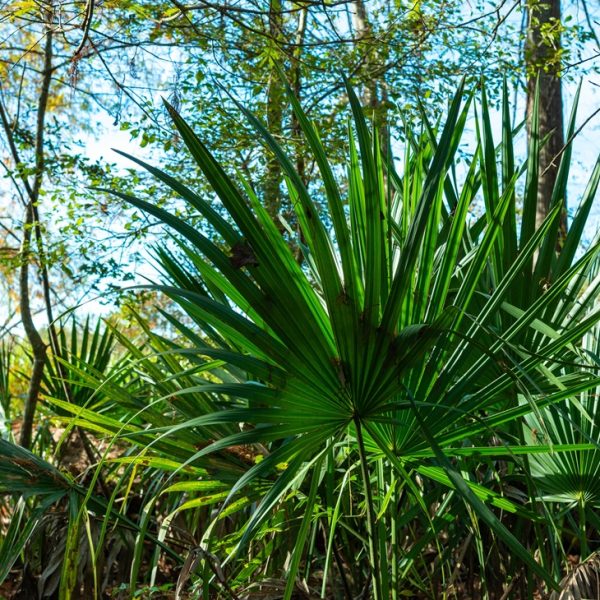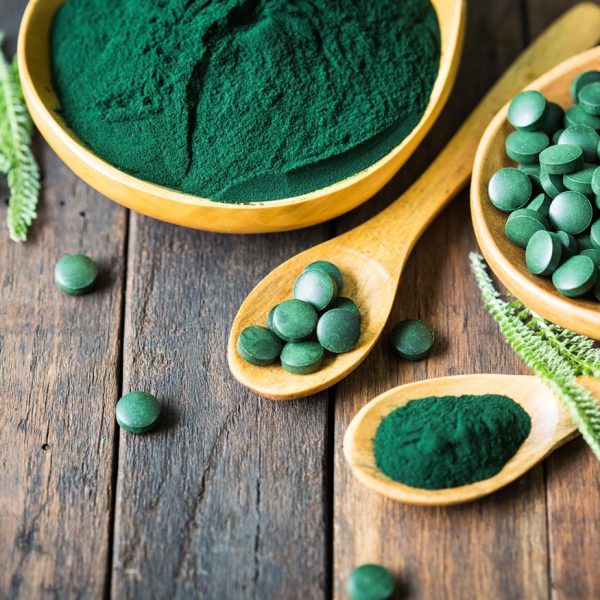-
How does it feel?
The blooms of the Honeysuckle are delightfully fragrant with sweet nectar that may be sucked from the base of the flower once the stamen has been removed. As an herbal tea, the dried buds of the flower create a vivid yellow-green decoction that is sweet and slightly bitter on the palate.
-
What can I use it for?

Honeysuckle (Lonicera japonica) Honeysuckle is a major traditional Chinese medicine (TCM) for a broad range of “heat” conditions. Specifically, it clears “wind-heat”, “toxic heat”, “damp-heat” or combinations thereof.
Wind-heat
Honeysuckle is perhaps best known for its leading role in TCM herbal formulas designed to treat acute “wind-heat” febrile disease in the early stages. These are typically colds and flus that are “hot” in nature as evidenced by fever that is greater than or instead of chills, a sore throat, headache and cough and stuffy nose with sticky yellow or green mucus. Indeed, in 2003, Honeysuckle (jin yin hua) was the most widely used TCM herb within formulations treating the SARS coronavirus in China and a leading herb in the treatment of the COVID 19 outbreak there. (1,2)
Toxic heat
It is, however, also applicable for a wide variety of cases of “toxic heat” – broadly, inflammation and infection – in the body, both internally and externally. General signs of “heat toxin” in one’s system include thirst, dry stools, yellow urine, swellings, pus, pain, redness, a red tongue with a yellow coat and a rapid pulse. Honeysuckle is traditionally utilised where these signs are married with the internal conditions of sore throats, lung or intestinal abscesses, pneumonia, diarrhoea or dysentery and externally for sores and swellings (especially of the breast or eyes), ulcerations, boils and for other common dermatological conditions such as acne and rosacea where “toxic heat” is present.
Damp-heat
In TCM, “dampness” in the body describes excess fluids manifesting in the likes of oedema, swellings, sensations of heaviness, aches, excessive discharges, bloating, fluid accumulation and loose stools. Conditions of dampness with “heat” signs are often associated with offensive discharges and inflammatory conditions. Honeysuckle may be used in cases of “damp-heat” affecting the “lower jiao” (the lower abdomen and genitals), particularly for dysenteric disorder and painful urinary dysfunction.
Modern research is also exploring its antioxidant, liver-protective, anti-diabetic, anti-tumor and immune-boosting properties. (3)
-
Into the heart of honeysuckle

Honeysuckle (Lonicera japonica) One of the most widely used of all the herbs in the Chinese herbal pharmacopoeia, Honeysuckle flowers and their buds, known in China as jin yin hua (gold silver flower), have a wonderfully cooling and soothing quality that has been harnessed as an anti-inflammatory, antiviral and antibacterial agent for infectious diseases and more in the east for millennia.
Sweet and cold in nature, Honeysuckle is a leading herb in the TCM category of herbs that “clear heat and relieve toxicity”. As it “enters” the Lung, Large Intestine and Stomach organ systems, it is especially useful for clearing heat with toxicity (i.e. pus, swellings, inflammation, redness and pain) affecting these organs and is invaluable in the treatment of upper respiratory tract disorders, skin conditions (in TCM our skin is the outward expression of our lungs), diarrhoea and dysentery with the appropriate presentations.
In TCM, the Lungs and Large intestine are partnered in a symbiotic relationship. Honeysuckle is a wonderful example of an herb that has a balancing effect on this organ pair, and it is used extensively in China for viral infections presenting with both upper respiratory tract and gastrointestinal symptoms.
-
Traditional uses

Honeysuckle (Lonicera japonica) Used to clear “toxic heat” from the body, Honeysuckle has been utilised extensively in TCM for thousands of years to treat everything from epidemic febrile diseases to carbuncles.
It was first listed in the Ming Yi Za Zhu (Miscellaneous Records of Famous Physicians) around 500CE and later in the Ben Cao Gang Mu, a classical Chinese materia medica where it was reported to treat “heat-evil”, swellings and dysentery to “protect the body and prolong life”. A later TCM herbal text, the Ben Jing Feng Yuan (1695CE), describes Honeysuckle as a “holy drug” for “detoxifying, removing pus…and treating carbuncle”. (3)
Honeysuckle has also been consumed as “Jin Yin Hua Dew” (honeysuckle flowers and their buds distilled in water), in soups, as a wine, as a gargle and in lozenge form alongside other heat-clearing herbs such as Mint, Chrysanthemum and Loquat leaves for sore throats. (4)
The stem of the Honeysuckle, known as ren dong teng (tolerate winter vine – on account of the shrub or climber’s evergreen quality), was traditionally combined in a decoction with Honeysuckle flowers and their buds and drunk for infections with swellings and pus or for the early stages of febrile disease with fever, boils or sore throat. The decoction could be strained then the used stems, leaves and flowers applied as a poultice on affected areas.
Honeysuckle leaves have also been used as a tea substitute especially in the summer to clear “heat” from the body and boost the immune system.
-
Traditional actions
Herbal actions describe therapeutic changes that occur in the body in response to taking a herb. These actions are used to express how a herb physiologically influences cells, tissues, organs or systems. Clinical observations are traditionally what have defined these actions: an increase in urine output, diuretic; improved wound healing, vulnerary; or a reduction in fever, antipyretic. These descriptors too have become a means to group herbs by their effects on the body — herbs with a nervine action have become the nervines, herbs with a bitter action are the bitters. Recognising herbs as members of these groups provides a preliminary familiarity with their mechanisms from which to then develop an understanding of their affinities and nuance and discern their clinical significance.
-
Traditional energetic actions
Herbal energetics are the descriptions Herbalists have given to plants, mushrooms, lichens, foods, and some minerals based on the direct experience of how they taste, feel, and work in the body. All traditional health systems use these principles to explain how the environment we live in and absorb, impacts our health. Find out more about traditional energetic actions in our article “An introduction to herbal energetics“.
Chinese energetics
-
What practitioners say

Honeysuckle (Lonicera japonica) In TCM clinical practice – outside of a hospital setting – Honeysuckle is most commonly prescribed, often as a chief herb, within herbal formulae to support the immune system and treat the early stages of colds and flus deriving from “exterior wind-heat”. These present with fever greater than or instead of chills, a sore throat, headache and cough and stuffy nose with sticky yellow or green mucus as well as a radial pulse that is “floating” (just below the surface of the skin) and rapid on palpation and a tongue that is red-tipped with a thin yellow coating. “Exterior wind-cold” cold and flus, on the other hand, manifest with chills greater than fever or no fever, clear, runny nasal discharge and a tongue body that is unchanged in colour with a thin white coating. In such cases, not only would Honeysuckle not be useful, but it would likely exacerbate the condition. In cases of severe “wind-heat”, including for pneumonia and early-stage lung abscesses, the dosage of Honeysuckle may be increased up to 30g.
Yin Qiao San (Honeysuckle and Forsythia Powder) is a popular classical formulation with, as the name informs, a leading TCM herbal pairing as its chief herbs. It is used in the early stages of “acute exterior wind-heat and” is delicately balanced; able to clear “heat” from the respiratory system without the coolness of its chief herbs injuring the “middle jiao” (digestion) and it may be used for upper respiratory tract infections, flus, tonsilitis, acute bronchitis, measles, mumps, early stage meningitis and encephalitis. (5)
For sore throats and mouth ulcers, Honeysuckle may also be decocted in equal parts with Platycodon (jie geng) and Forsythia (lian qiao) to make a mouth gargle.
Honeysuckle is also an important herb for “heat” in the gastrointestinal tract. In TCM, it is believed that “wind-heat” can penetrate the interior, leading to nausea and vomiting by blocking the natural descent of stomach qi, causing it to “rebel upwards”. External pathogens invading the digestive tract can also lead to localised “dampness” and “toxic heat” manifesting as diarrhoea and dysentery. In such cases, a formula such as Bai Tou Weng Tang (Pulsatilla Decoction), comprised of eleven herbs including Honeysuckle and Pulsatilla (bai tou weng), may be used to clear “toxic heat” and “damp heat”, cool the blood (to stop any rectal bleeding) and stop dysentery. Honeysuckle may also be charred to enhance its ability to stop bleeding in such instances.
It is also used widely in TCM dermatology formulas for a range of skin conditions presenting with “toxic heat” signs and symptoms such as swellings, pus, boils and redness. Examples include Yin Qiao San (as above) for early stage measles, Cuo Chuan Jian Ji (Acne Decoction) of which Honeysuckle is the chief herb, Xi Chuang Fang (Formula to Wash Sores), a topical wash for bacterial infections of the skin such as impetigo and Wu Wei Xiao Du Yin (Five ingredient Decoction to Eliminate Toxin), a popular formula for purulent skin infections such as furuncles, mastitis, folliculitis and erisypelas. Indeed, Honeysuckle is so valued in TCM dermatology that in TCM hospitals in China extracts are injected directly into the affected skin lesions. Its soothing anti-inflammatory qualities are now seeing Honeysuckle’s inclusion in cosmetics to calm and clear the redness and irritation of sensitive skin, acne, rosacea and eczema the world over.
-
Research

Honeysuckle (Lonicera japonica) Shuang Huang Lian oral liquid
Most clinical studies relating to Honeysuckle flowers and their buds (L. japonica Thunb./ jin yin hua) involve the herbal products within which it is an ingredient. Of these, Shuang Huang Lian, a popular TCM patent medicine widely used in east asia for upper respiratory tract infections comprised of Honeysuckle, Scutellaria (huang qin) and Forsythia (lian qiao), has been most extensively researched, although larger-scale, high-quality clinical trials are called for.
A 2021 randomized, open-label, parallel-controlled, multicentre clinical trial involving 176 individuals with COVID-19 found that Shuang Huang Lian alongside conventional treatment significantly increased the negative conversion rate of SARS-CoV-2 in swab tests after a 14 day period and that individuals on the highest dose of the herbal formula displayed a significant absorption of inflammatory focus of pneumonia as compared to the control, low- and medium-dose groups. (6)
Honeysuckle (L. japonica)
Bearing in mind that Honeysuckle (jin yin hua) is typically prescribed within a synergistic formula of herbs and that research relating to this herb in isolation has almost exclusively involved pre-clinical (in vitro and animal) studies – the results of which may or may not translate in human clinical trials – its extracts and compounds have displayed promising effects in these preliminary studies, warranting further clinical research.
Anti-inflammatory
An early in vitro study showed that luteolin (a flavonoid derived from Honeysuckle and other sources) from Honeysuckle attenuated the inflammatory response of activated mast cells (cells responsible for the release of histamine and other inflammatory and allergic reactions) by blocking the responsible activation pathways. It significantly inhibited the release of inflammatory cytokines (protein messengers involved in the body’s immune response) and reduced cyclooxygenase (COX)-2 (an enzyme involved in the formation of inflammatory substances) expression, suggesting that luteolin from Honeysuckle may have a regulating effect on mast cell-mediated inflammatory diseases such as allergies, inflammatory bowel disease and rheumatoid arthritis. (7)
A later in vitro study exploring the anti-inflammatory potential of polyphenols extracted from Honeysuckle yielded similar results – the significant inhibition of inflammatory cytokine production via the interruption of specific signalling pathways. (8)
Similarly, a 2019 study extracted five iridoid glycosides from Honeysuckle. Iridoid glycosides are protective molecules within plants that help the plant combat viruses and pathological microbes and heal damage and have displayed a number of pharmacological activities including anti-inflammatory, antibacterial, anti-virus, anti-allergy and hepatoprotective effects. The study found that the five extracted iridoid glycosides showed antibacterial and anti-inflammatory effects. (9)
A 2020 animal study investigated the anti-inflammatory potential of chrysoeriol, a flavone (a type of flavonoid that provides pigment to white-cream flowers as well as a pesticidal function) found in Honeysuckle, observed that it reduced acute skin inflammation via the inhibition of specific pro-inflammatory pathways. (10)
Antipyretic
A 2020 animal study found that carbon dots derived from Honeysuckle alleviated inflammation by inhibiting pro-inflammatory cytokines and helped to restore normal temperature. (10)
An earlier animal study comparing the effects of a popular TCM patent formula for fever and upper respiratory tract infections, Shuang Huan Lian (as above), with Honeysuckle alone found that the formula yielded greater bioavailability of chlorogenic acid (a polyphenol with anti-inflammatory effects) and stronger antipyretic effect than Honeysuckle alone. (11)
Antiviral
Early in vitro studies found that ethanol extracts of Honeysuckle inhibited Newcastle Disease Virus Phenolic acids and flavonoid extractions displayed significant antiviral activity against pseudorabies virus in vitro. (12,13)
A 2017 study explored the antiviral effects and mechanisms in vitro and in vivo of cholorogenic acid, abundant in Honeysuckle, against the influenza A virus. The study found that chlorogenic acid blocked the release of new virus particles from infected cells in both in vivo and animal models by neuraminidase (an enzyme involved in influenza cell replication) inhibition. (14)
A later in vitro and in vivo study found that a number of components of Honeysuckle (Honeysuckle water extract, isochlorogenic acids A, B and C, caffeic acid and luteolin) had a 90% inhibitory action against a virus, SGIV-Gx, fatal and common to grouper fish and that this effect was dose-dependent. (15)
Antibacterial
The antibacterial activity of Honeysuckle has been studied extensively. (1)
A 2023 study investigated the active ingredients and metabolic mechanisms involved in Honeysuckle’s inhibition of Bacillus cereus, a widespread bacterium causing vomiting and diarrhoea with strains resistant to antibiotics. It found that the bacterium was inhibited by water and ethanol extracts of Honeysuckle as well as the individual active ingredients luteolin, quercetin, and kaempferol. The ethanol extracts showed stronger bacterial inhibition than the water extracts and it observed that the mechanism involved is likely disruption to the Bacillus cereus cell wall and cell membrane structure. (16)
-
Did you know?
In China, sales of a popular canned herbal tea drink containing Honeysuckle, Wang Lao ji, exceeded that of Coca Cola in 2018 and, as of 2020, the supply of this herb did not meet the demand. (17)
Additional information
-
Botanical description
L. japonica Thunb. is a climbing or trailing woody vine with evergreen oval or elliptical opposite leaves of 1-3 inches, fragrant white-cream flowers up to 2 inches long with protruding stamens and small black berries. Flowers blossom from May to August.
-
Common names
- Lonicera
- Jin yin hua (China)
- Kinginka (Japan)
- Kumunhwa (Korean)
-
Safety
Generally considered safe at prescribed dosages. There is no available data for the safety of Honeysuckle in pregnancy and breastfeeding.
-
Interactions
May interact with anticoagulant and antiplatelet medications
-
Contraindications
Diarrhoea stemming from “cold” in the digestive system, sores from qi or yin deficiency
-
Preparations
- Decoction
- Tea
- Distilled water
- Wine
- Powders
- Pills
- Lozenges
- Injections
- Poultices
-
Dosage
9-20g of dried crude herb. May go as high as 60g in severe case.
-
Plant parts used
Flowers and flower buds
-
Constituents
- Organic acids: Chlorogenic acid, isochlorogenic acid, neochlorogenic acid, caffeic acid
- Flavonoids: Luteoloside, luteolin, lonicerin, quercetin
- Volatile oil: Linalool
- Inositol
- Iridoids
- Saponins
- Tannins

-
Habitat
Honeysuckle grows wild in China, Japan and Korea on hillsides, valleys, forest margins or roadsides and is cultivated. It is an introduced weed in many parts of the west.
-
Sustainability
According to the IUCN Red List of Threatened Plants Status: This taxon has not yet been assessed.
-
Quality control
The Chinese Pharmacopoeia of 2020 states that chlorogenic acid is used as a marker for quality control of Honeysuckle (jin yin hua) and related products. Good quality specimens of the dried crude herb should have more than 1.5% of chlorogenic acid. The flavonoid luteoloside is another quality marker and specimens should contain no less than 0.05%.
-
How to grow
L. japonica is a fast-growing, aggressive twining vine that can choke other vegetation if not contained and is a problem weed in many parts of the Western world so caution must be exercised when growing this plant.
Grows best in full to partial sun in dry to moist, well-drained soils. Cut back in late winter and be careful to dispose of cuttings properly. Pick the flowers and unopened buds between May to August and dry in the sun.
-
Recipe
Cooling Honeysuckle Tea
For a sweet and refreshing tea that clears “heat” from the body and is especially good in the summer months, simply steep the following in boiling water for 5-10 minutes, strain and serve:
- Jin yin hua (dried Honeysuckle flowers and buds) 15g
- Bo he (dried Mint leaves) 5g
- Gou qi zi (Goji berries) 15g (18)
-
References
-
- Shang X et al. Lonicera japonica Thunb.: Ethnopharmacology, phytochemistry and pharmacology of an important traditional Chinese medicine. Journal of Ethnopharmacology. 2011;138(1):1-21. ISSN 0378-8741, https://doi.org/10.1016/j.jep.2011.08.016.
- Luo L et al. Analysis on herbal medicines utilized for treatment of COVID-19. Acta Pharm Sin B. 2020 Jul;10(7):1192-1204. doi: 10.1016/j.apsb.2020.05.007. Epub 2020 May 27. PMID: 32834949; PMCID: PMC7251357.
- Zheng S et al. Systematic review of Lonicerae Japonicae Flos: A significant food and traditional Chinese medicine. Front Pharmacol. 2022 Oct 19;13:1013992. doi: 10.3389/fphar.2022.1013992. PMID: 36339557; PMCID: PMC9626961.
- Foster S, Yue C. Herbal Emissaries: Bringing Chinese Herbs to the West. Vermont: Healing Arts Press; 1992.
- Bensky D, Gamble A. Chinese Herbal Medicine: Formulas and Strategies. Washington: Eastland Press; 1990.
- Ni L et al. Effects of Shuanghuanglian oral liquids on patients with COVID-19: a randomized, open-label, parallel-controlled, multicenter clinical trial. Front Med. 2021 Oct;15(5):704-717. doi: 10.1007/s11684-021-0853-6. Epub 2021 Apr 28. PMID: 33909260; PMCID: PMC8079840.
- Kang OH et al. Luteolin isolated from the flowers of Lonicera japonica suppresses inflammatory mediator release by blocking NF-kappaB and MAPKs activation pathways in HMC-1 cells. Molecules. 2010 Jan 18;15(1):385-98. doi: 10.3390/molecules15010385. PMID: 20110898; PMCID: PMC6257122.
- Han MH et al. Flavonoids Isolated from Flowers of Lonicera japonica Thunb. Inhibit Inflammatory Responses in BV2 Microglial Cells by Suppressing TNF-α and IL-β Through PI3K/Akt/NF-kb Signaling Pathways. Phytother Res. 2016 Nov;30(11):1824-1832. doi: 10.1002/ptr.5688. Epub 2016 Aug 18. PMID: 27534446.
- Yang R et al. Separation of Five Iridoid Glycosides from Lonicerae Japonicae Flos Using High-Speed Counter-Current Chromatography and Their Anti-Inflammatory and Antibacterial Activities. Molecules. 2019 Jan 7;24(1):197. doi: 10.3390/molecules24010197. PMID: 30621066; PMCID: PMC6337566.
- Wu JY et al. Chrysoeriol ameliorates TPA-induced acute skin inflammation in mice and inhibits NF-κB and STAT3 pathways. Phytomedicine. 2020 Mar;68:153173. doi: 10.1016/j.phymed.2020.153173. Epub 2020 Jan 19. PMID: 31999977.
- Gao R et al. Comparative pharmacokinetic study of chlorogenic acid after oral administration of Lonicerae Japonicae Flos and Shuang-Huang-Lian in normal and febrile rats. Phytother Res. 2014 Jan;28(1):144-7. doi: 10.1002/ptr.4958. Epub 2013 Feb 28. PMID: 23447366.
- Wang L et al. Study on anti-pseudorabies virus effect of Lonicerae japonicae flos and Lonicerae Flos. J China Anim Sci Vet. 2011;38(3):183–188.
- Wang Y et al. Processing methods and commercial specifications of honeysuckle. Cenpal South Pharm. 2011;09(1):75–77.
- Ding Y et al. Antiviral activity of chlorogenic acid against influenza A (H1N1/H3N2) virus and its inhibition of neuraminidase. Sci Rep. 2017 Apr 10;7:45723. doi: 10.1038/srep45723. PMID: 28393840; PMCID: PMC5385491.
- Mingzhu L et al. Antiviral activities of Lonicera japonica Thunb. Components against grouper iridovirus in vitro and in vivo. Aquaculture. 2020;519:734882. doi.org/10.1016/j.aquaculture.2019.734882.
- Xu N et al. Lonicera japonica Thunb. as a promising antibacterial agent for Bacillus cereus ATCC14579 based on network pharmacology, metabolomics, and in vitro experiments. RSC Adv. 2023 May 22;13(23):15379-15390. doi: 10.1039/d3ra00802a. Erratum in: RSC Adv. 2024 Apr 9;14(16):11322. PMID: 37223411; PMCID: PMC10201548.
- Li Y et al. Lonicerae japonicae flos and Lonicerae flos: a systematic review of ethnopharmacology, phytochemistry and pharmacology. Phytochem Rev. 2020;19(1):1-61. doi: 10.1007/s11101-019-09655-7. Epub 2019 Nov 22. PMID: 32206048; PMCID: PMC7088551.
- Li H, Lu C. Lonicera japonica Thunb (Jinyinhua, Honey Suckle). Dietary Chinese Herbs. 2015 Feb 19:693–702. doi: 10.1007/978-3-211-99448-1_78. PMCID: PMC7120270.
-







































